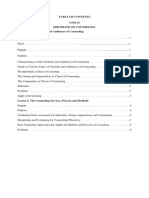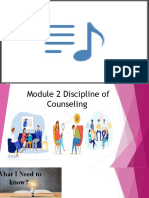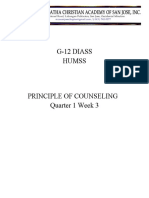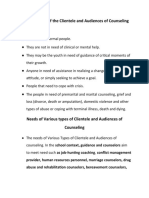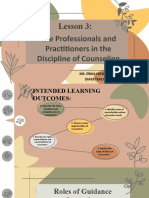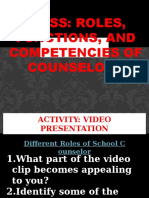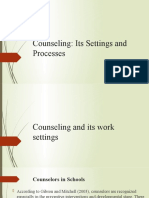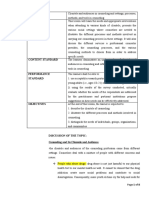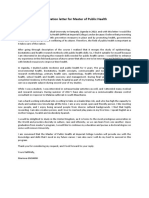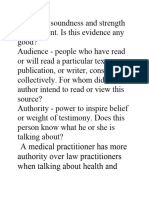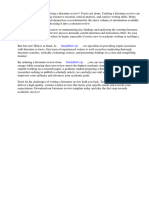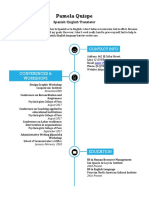100% found this document useful (5 votes)
17K views10 pagesSettings, Processes, Methods and Tools in Counseling: Quarter 1 (Module 5)
This document provides an overview of counseling processes, methods, and work settings. It discusses the six stages of the counseling process: 1) relationship building, 2) assessment and diagnosis, 3) formulation of counseling goals, 4) intervention and problem solving, 5) termination and follow-up, and 6) research and evaluation. It also outlines classic counseling theories from Freud, Adler, and Jung, as well as experiential theories from Rogers and Perls. Finally, it describes the different work settings for counselors in schools, community, private sector, and government.
Uploaded by
Mark Anthony GarciaCopyright
© © All Rights Reserved
We take content rights seriously. If you suspect this is your content, claim it here.
Available Formats
Download as DOCX, PDF, TXT or read online on Scribd
100% found this document useful (5 votes)
17K views10 pagesSettings, Processes, Methods and Tools in Counseling: Quarter 1 (Module 5)
This document provides an overview of counseling processes, methods, and work settings. It discusses the six stages of the counseling process: 1) relationship building, 2) assessment and diagnosis, 3) formulation of counseling goals, 4) intervention and problem solving, 5) termination and follow-up, and 6) research and evaluation. It also outlines classic counseling theories from Freud, Adler, and Jung, as well as experiential theories from Rogers and Perls. Finally, it describes the different work settings for counselors in schools, community, private sector, and government.
Uploaded by
Mark Anthony GarciaCopyright
© © All Rights Reserved
We take content rights seriously. If you suspect this is your content, claim it here.
Available Formats
Download as DOCX, PDF, TXT or read online on Scribd
/ 10





















